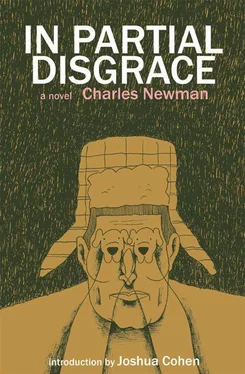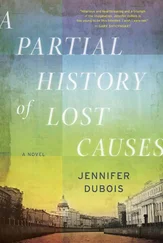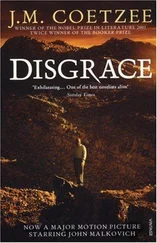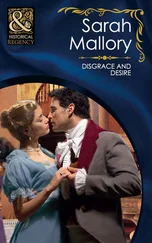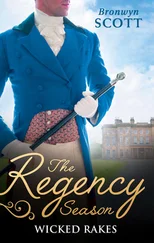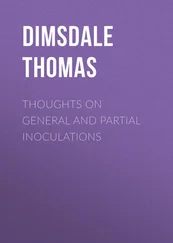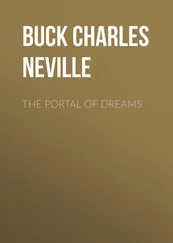In one of the boxes were two jars of Hippodamia beetles, one all dead, the other swarming.
“I defy you, Berganza, to describe the difference between those who perished and those who yet crawl. Did those who survive exhibit purpose? If a blow of fate were good for a species, would we not then knock all our breeding animals in the head?”
The cornices of Father’s den were black with the tubes of rolled-up charts. The greatest attention was given to a German one, “The Scale of Being,” across which various preening species gamboled in ingenious movable cutouts with tacks, eyelets, and tiny golden cords sewn in their backs. Father and the Professor spent many pleasant Sundays arguing the order of the warm-blooded hierarchy, being careful to distinguish between the merely peculiar and those who were clearly victims of fate. The candidates moved up and down the chart, one day favoring the Professor’s inexplicable choice, the duck, and another Father’s, the underrated pig. (“Neither so nasty nor lazy as depicted.”) Both animals had soon vaulted the poor horse, whose only act of intelligence, they posited, was to run away, a kind of continual emigration akin to fish and birds, but without their drama and regularity.
Of course, the dog and the ape vied for the topmost slots on “The Scale of Being,” the two men agreeing in a spirit of comity that while the ape had a higher intellect, the emotions of the noble dog were more developed. Once this was ascertained, they turned to a chart of French manufacture, “The Tree of Life,” a lovely bit of evolutionary metaphor with each species named in a venous leaf sprouting from its family branch. Scipio and Berganza began by drawing new branches connecting the main limbs, which wavered oddly, as if a child had drawn them in, for it was possible to rank emotional classifications as well as intellectual categories by drawing new leaves on the new branches. In these leaves, the ape was clearly the winner in self-esteem, self-control, cautiousness, and powers of imitation. Man was ahead in matters of hope, ideality, deceit, and sense of the marvelous. The dog excelled in adhesiveness, benevolence, conscientiousness, and veneration. While all three seemed equal in amativeness, homesickness, and love of approbation, only the dog shared with man the capacities of shame, remorse, indefinite morality, and, above all, the sense of the ludicrous. They added to this perhaps the most elevated sense of all, the dog’s superior dread of the police. For a time, the dog’s rich emotional life and preternatural sagacity vaulted him to the very topmost branches of “The Tree of Life,” and there these qualities perched in the topmost branches like a clumsy, frightened cat, holding on for dear life as the remaining categories fluttered down like so many autumnal reflections.
In these rankings of nobility, thirteen Sundays were allotted to the horse, fourteen to the ox, seventeen to the sheep, eleven to the goat, five to the duck, seven to the pig, and thirty-nine to the dog, with occasional forays into the elephant and the whale, and one interminable session on marsupials. Anecdotal as well as scientific evidence was submitted: a bull who nuzzled a man who had saved him from lightning; cats who knocked telephones out of their owner’s hands; a dog who bit a lesion out of his owner’s leg which turned out to be cancerous; creatures that warned of epileptic fits, earthquakes, hurricanes, and air-raids, in which none of the five senses could have been involved. There were also spirited defenses of those at which the charge of stupidity had been leveled, digressions into the savage species which had been eliminated (unaware of the services man could render them), not to mention the pointlessly destructive fox, the disgusting guinea pig (so indifferent to his surroundings), the tendency of carnivores to butcher more than they could possibly eat, cats which appealed only to the lowest grade of portrait artists, and the tendency of the elephant to bear a grudge. It was clear that one could be elevated either by useful service or courageous threat to authority — only the dog was elevated by its power of spontaneous love — and in all these discussions, the highest position man achieved out of a ranking of fifty was in the low teens, just ahead of livestock, on the grounds that very little is required to talk, and even less to think.
“It was our beloved Spinoza,” the Professor summed up, “who pointed out that while all animals are excusable, it does not follow that all men are blessed.”
On occasion they even entered the true domain of philosophy, putting aside questions of category, of how thoughts might arise without recourse to thinking, of whether one could stop thinking without a thought, and if “The Tree of Life” forks at the top, whether its roots are thus a mirror of the crown. The Professor confessed he had never seen a tree’s roots, and Father took him that very afternoon into the Marchlands, where trees were uprooted from the swampy soil with every storm — great elms on their sides, roots inscribing an arc as wide as the branches, some still growing along the ground. Father pointed out that of all trees, a fallen one is most useful, gathering more flora and fauna than the most majestic, isolated example. The fallen tree which still lives and thus multiplies other forms of life — not awesome-appearing, worthless to gather, and fallen out of the frame of beauty and providence, but functional to its final molecule and “worth even worship,” was how Father left it.
They returned to the den, there to contemplate in silence a fact of which they were always partially aware but had not taken sufficiently into account, namely that “The Tree of Life” and “The Scale of Being” had apparently nothing to do with one another. They had embarked on that long journey of adding zeros to the numeral of themselves, for only the most courageous of men could admit that as their knowledge increased by infinite magnitudes, their basic ignorance had scarcely diminished.
But in Cannonia, where time flows back and forth, and observers are always linked to the observed, it was difficult to deny that distant feeling that everything is morphically interconnected and resonates.
I had the distinct apprehension that given just the slightest excuse — another glass of whiskey or another chart — these two men would have sauntered out the door and left their families in their great houses, renouncing their life insurance and wealthy clientele for the road, leashed and snaffled together as oft-erring vagabond folk, diligently scrutinizing men, loving women in haste, reveling in animal and gustatory marvels, and traversing the humming plains of Flanders, or the mellow gardens of France, or the desolate Spanish uplands, playing jokes on prime ministers, kings, and potentates, and finally traveling east to the most Byzantine of nations to give the reigning pasha a hot foot.
IN DARKEST CANNONIA (Rufus)
On our return to Semper Vero, I was given a rough inventory of the many classical statues. Each time Iulus’s parents had wanted to modernize the bathrooms, they had decided instead upon yet another piece of garden sculpture. We circled a huge zinc figure of a winged woman from the design of an unknown Parisian sculptor. Her wings were quite small for her body and she held her right breast with her left hand as the dogs urinated merrily on her feet. Further on sat a cast-iron statue of an Eastern knight in need of immediate repair, a huge knotted sash barely covering his feverish groin, his big-balled horse rearing precipitously upon a millstone so that he might be turned toward an enemy like a weathervane. Then a rather nervous bronze Buddha with extraordinary earlobes, (“Not a copy,” it was pointed out), and finally a cluster of three negro boys, one in breechcloths with a snake in his hands, another in pharaonic headdress with a vessel on his shoulders, and a third in rather elegant and modern tennis shorts, holding a sphere in one hand and a handle of something which had been broken off in the other.
Читать дальше
